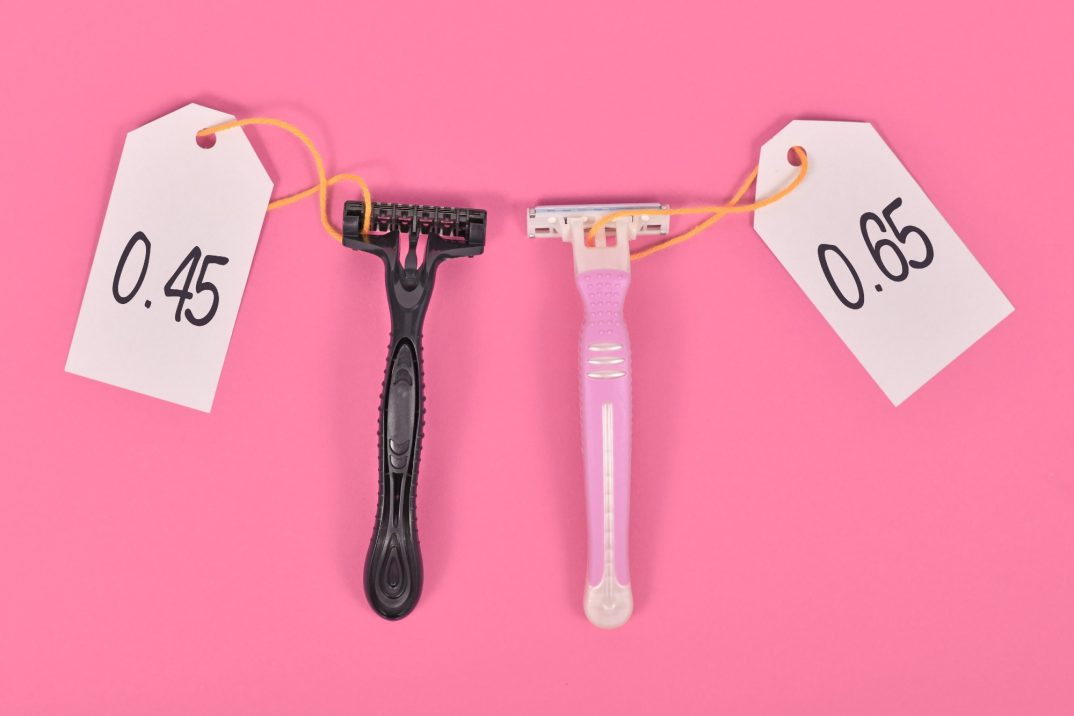Article: The “Pink Tax” and Gender Price Disparity in Personal Care. Image Credit: Firn / Shutterstock
The Pink Tax means women pay more for products marketed to them, often due to branding, not production costs.
An article published in the journal Encyclopedia describes how price disparities in female personal care products and services impact their purchasing capacity.
Background
The Pink Tax refers to higher selling prices of products and services marketed primarily for women than similar or identical products targeting men. This type of gender-based pricing has been observed across various industries.
Some essential products used by both genders, such as razors, shampoo, and deodorant, are mostly subjected to the Pink Tax. Existing evidence indicates a 7% higher pricing of these personal care products for women compared to men. This pricing strategy is often justified through differentiated marketing rather than differences in production costs.
Corporations have conveniently maximized profits from a segment of their customers without publicly acknowledging this discrimination. Packaging and marketing strategies of companies like Unilever have significantly contributed to the persistence of gender price disparity. This pricing strategy is often justified through differentiated marketing rather than differences in production costs.
In this study, scientists evaluated to what extent multinational companies influence gender-based pricing and how these disparities can be mitigated through appropriate interventions. They specifically explored various marketing strategies and product design choices of the company Unilever that contribute to the persistence of the Pink Tax in the personal care industry. Unilever was used as a case study to provide concrete examples, reflecting broader trends rather than singling out the company alone.
Types of Pink Tax
Gender-based pricing is one of the most common types of Pink Tax, where female products are sold at higher prices than male products. This price hike is primarily not associated with the actual production cost but rather with the perceived value or branding of the product.
Differentiated packaging and branding is another form of Pink Tax, where companies market male and female products differently by changing the packaging, color, or branding. Female products are often marketed at higher prices despite being virtually the same. The perceived added value of this specialized branding is used to justify the higher cost.
An extensive form of Pink Tax is service discrimination. Despite receiving identical services, women pay more than men. This disparity can be seen in a range of services, including haircuts, dry cleaning, and car repair. This discrimination is based on the assumption that women are less likely to negotiate or question the over-price.
Another vital form of Pink Tax is luxury and niche marketing, where products or services matching women’s needs or desires are priced at a premium. The basic assumption is that women are willing to pay more for specific products or experiences, especially in luxury markets. This type of discrimination can be seen in high-end fashion products, wellness retreats, and premium skincare or beauty products.
Another more structural form of Pink Tax is differential taxation, where higher taxes are applied to certain essential female products, including menstrual products. Differential taxation has gradually become debatable, and more equitable tax policies that recognize the essential nature of these products for women have been called for.
Economic aspects of Pink Tax
The economic aspects of the Pink Tax are challenging to compare because companies like Unilever do not charge similar male and female products differentially. Instead, these companies can sell nearly identical products that are marketed differently to men and women due to gender socialization. These strategies allow companies to charge different prices to different segments of society.
Society has unfortunately accepted these price disparities with the argument that there is no restriction for women to buy men’s products and that they can choose low-priced male products over over-priced female products.
However, women often experience an additional financial burden due to Pink Tax, as they feel the pressure of following societal standards that have been marketed to them from birth.
Existing evidence suggests that the Pink Tax is not necessarily essential but is a commonly used strategy for companies like Unilever to remain profitable. Unilever’s female hygiene products have been studied extensively. The company conducted a “hyacinth project” project to collect information about menstrual habits from anonymous consumers. This information helped the company create the baseline of absorbent materials featured in today’s female hygiene products. However, these practices reflect broader industry strategies rather than unique actions by Unilever.
However, Unilever’s marketing strategy to sell female products became controversial. The company advertised the menstrual cycle as a “7-Day War,” which their product would ‘defeat.’ This was done to make the advertisement acceptable for public consumption. Such terminology was indicative of the times and highlights how historical marketing often reinforced gender stereotypes.
Influence of social media
Social media plays a crucial role in shaping current trends. Influencers share their personal opinions to increase their followers on social media. This sometimes strengthens the feminine gender stereotype and consumerism in marketing new “must-have” products.
Pink is perceived as a feminine color, and thus, it is used in many female products to enhance women’s perception that using these products will strengthen their femininity in society.
Many new sanitary products have infiltrated the market through social media platforms and branded themselves as “organic,” “safer,” and “natural.” However, these products are 47% more expensive than non-organic alternatives.
Celebrities also use social media platforms to promote organic and healthier alternatives, which are often highly over-priced and inaccessible to ordinary people. The study notes that while social media amplifies these trends, it also provides a platform for raising awareness and challenging discriminatory practices. Another harmful side-effect is that social media can promote either wrong or extreme views or opinions labeled and marketed as “Facts,” influencing people to buy more and spend more than is necessary.
Study significance
The study highlights the need for equitable pricing mechanisms and informed consumer advocacy to mitigate economic disparities created by the Pink Tax. By examining these issues through a broader lens, the research advocates for more responsible marketing practices that avoid exploiting gender stereotypes.
Journal reference:
- Wishart, G.; Poo, M.C.-P.; Baxter, K.; Lau, Y.-y. The “Pink Tax” and Gender Price Disparity in Personal Care. Encyclopedia 2024, 4, 1279-1285. DOI: 10.3390/encyclopedia4030083,





